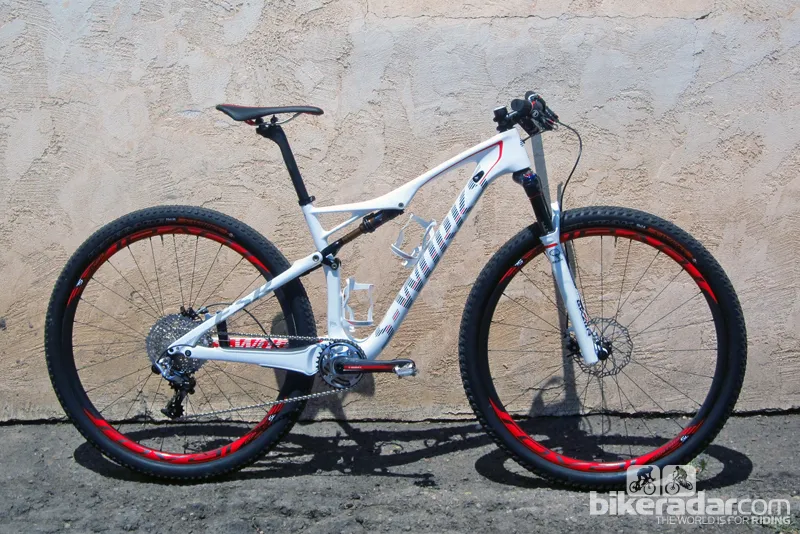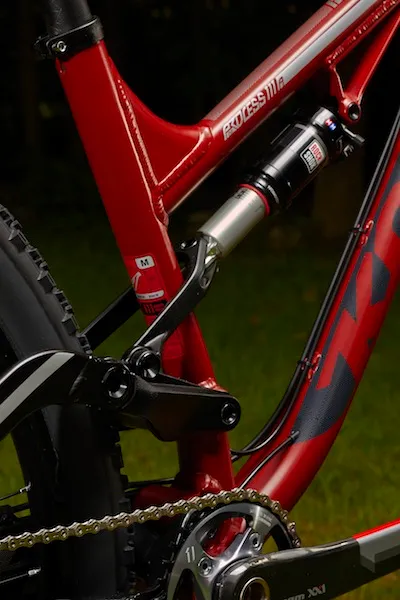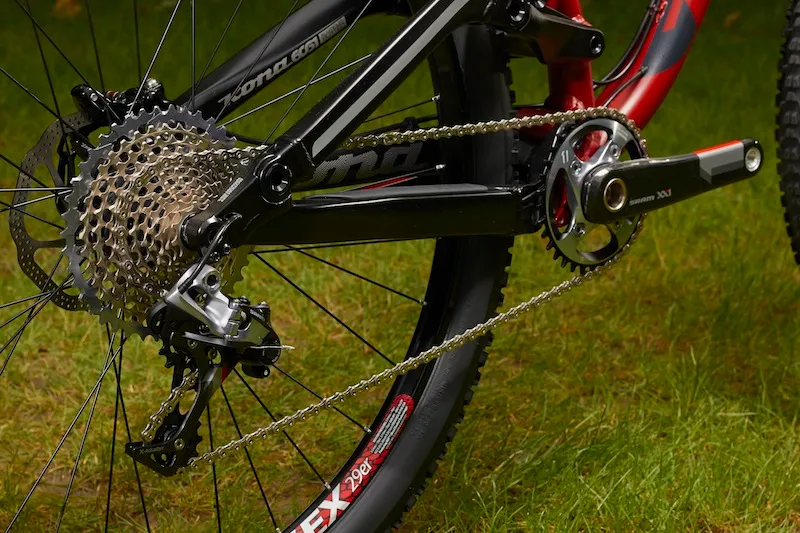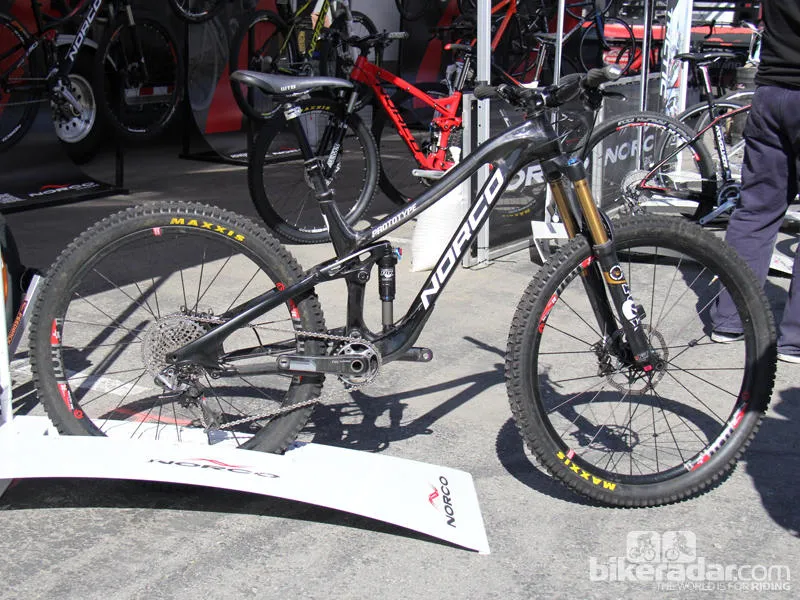Single-ring drivetrains are becoming increasingly popular for everything from cross-country to enduro racing. With the emergence of SRAM’s XX1 group, and the soon-to-be-released X01 group, the "one-by" configuration is reshaping mountain bike frame design. The 2014 model year will usher in a number of mountain bikes designed specifically for single-ring drivetrains.
While front derailleurs help us to conquer climbs, they also place significant restrictions on frame design. For the designer, the front derailleur can limit the minimum chainstay length. This is particularly problematic for 29ers, because as the chainstays shrink, the front derailleur and rear tire vie for the same real estate. Multiple chainrings can also lead to “hedging” the optimal placement of the main pivot on full-suspension bikes.
Buy mountain bike frames now from: Westbrook Cycles | Planet X Bikes | Evans Cycles | Wiggle
Along with the emergence of 11-speed drivetrains that provide ample gearing for most conditions, the rise of enduro racing and a drive for lighter and more agile big-wheeled bikes have pushed the development of a new generation of mountain bikes that forgo front derailleurs.
Here’s a look at three very different mountain bikes leading the single-ring charge.
Specialized Epic World Cup
The Epic has been Specialized’s flagship cross-country race machine since it was introduced 2003. It has gone through several iterations over the years, the latest being the division of the Epic into two distinct lines: the Epic and the Epic World Cup.
The Epic World Cup is a thoroughbred racer. It has a steeper head tube angle, 5mm less front and rear suspension travel and shorter chainstays than the standard Epic.
The Epic World Cup’s 439mm chainstays are not so short that the front derailleur and rear tire would interfere with one another. Even if they did, Specialized found a way to cheat the minimum chainstay length on 29ers by co-developing the Taco Blade front derailleur mount with SRAM for the Enduro 29. In the case of the Epic World Cup, it’s not the length of the chainstays that prohibits the use of a front derailleur, it’s their height.
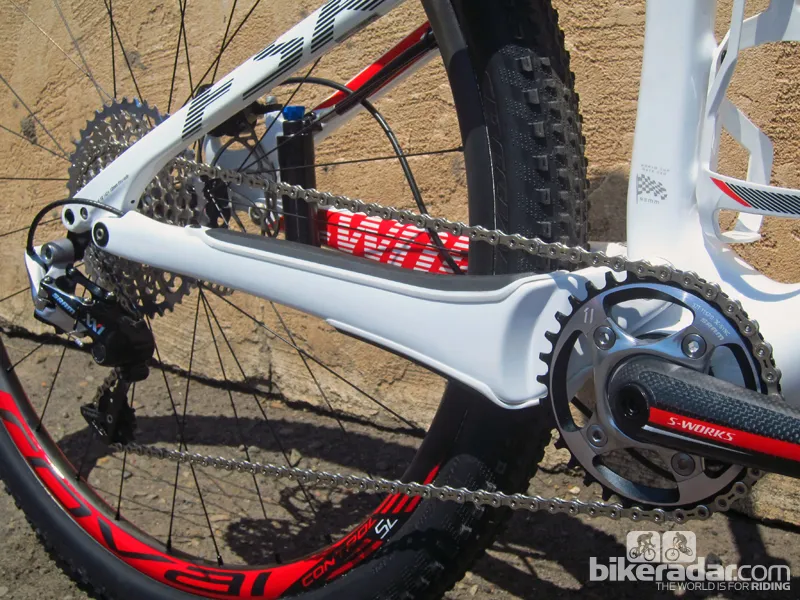
The Epic World Cup's chainstays are so large that there's no room for a front derailleur or multiple chainrings
The Epic World Cup has chainstays that are truly oversized. They are designed to maximize rear end stiffness, to transfer as much power as possible from the rider to the rear wheel. This stiffness comes at the expense of chainring clearance; the height and width of the drive-side chainstay leaves no room for multiple chainrings or a front derailleur.
Kona Process 111
Kona is no stranger to 1x frames. The Honzo, a slack, all-mountain 29er hardtail introduced in 2012 took design cues from several custom frame builders that had been creating 29er with short rear ends, some of which omitted front derailleurs.
The Process 111 builds on the success of the Honzo. The bike’s long top tube and slack head tube angle make for a long front center measurement. By keeping the rear end short, the bike should (at least on paper) still be nimble when steered from the hips, unlike some 29er trail bikes that require extra rider input to muscle the rear end around tight corners.

The Process 111 sacrifices a front derailleur in order to shorten the rear end, which should result in a more agile bike
Norco Sight Carbon
The 2013 Sight was offered in your choice of 26in or 650b (17.5in) wheels. First seen this spring at Sea Otter, the 2014 Norco Sight will only be available 650b wheels, it will also be available in carbon. The carbon prototype on display at Sea Otter had a number of interesting features including internal cable routing and an impressively low standover height. But the most striking detail was what it was lacking: any provision for mounting a front derailleur.
While Specialized and Kona ditched the front derailleur in order to improve performance, Norco is doing it purely for aesthetics – the Sight uses a direct-mount front derailleur tab, which looks rather unsightly when not in use.
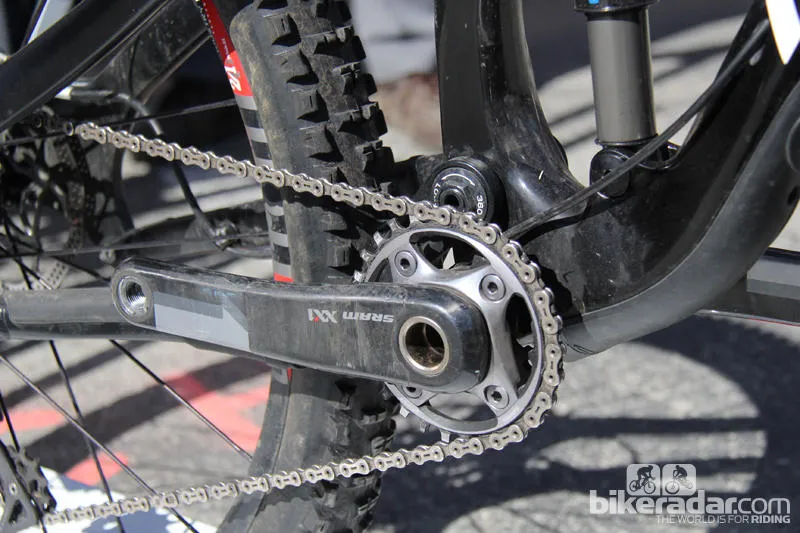
The lower portion of the Sight's seat tube is square, so running a band-type front derailleur is not an option
"We're seeing a lot more people running 1x drivetrains; this makes it look much cleaner." said Norco's PR marketing coordinator Dustan Sept.
The carbon frame will be available in two versions: one with a direct-mount front derailleur mounting bracket as well as the dedicated 1x frame shown here. Both frames will share the same geometry as the 2013 Sight.
Different reasons for ditching the front derailleur
Each of these bikes illustrates slightly different reasons for omitting the front derailleur. In the case of the Epic World Cup, the designers set out to create a snappy cross-country race bike with a stiff rear end. Kona wanted to create an agile 29er trail bike. Last but not least, the 2014 Sight Carbon nixes the front derailleur to keep the frame looking clean.
While arguably the shallowest reason for doing away with a front derailleur mount, Norco’s carbon Sight may be a sign of things to come: as more riders switch to 1x11 drivetrains, front derailleur mounts be will become superfluous on many bikes. Direct mount front derailleur brackets add weight (albeit not much) and add another step in the manufacturing process that could be cut to save time and money.
The 2014 model year looks to be the start of what could be a trend towards frames designed without regard to front derailleur compatibility. While many riders have found 1x drivetrains to suit their riding styles, it’s certainly not a drivetrain for everyone or every trail, so it's unlikely the front derailleur will become a vestige of our mountain biking past anytime soon.
What do you think?
Does eliminating the front derailleur create more capable mountain bikes, or does it eliminate options for riders?
